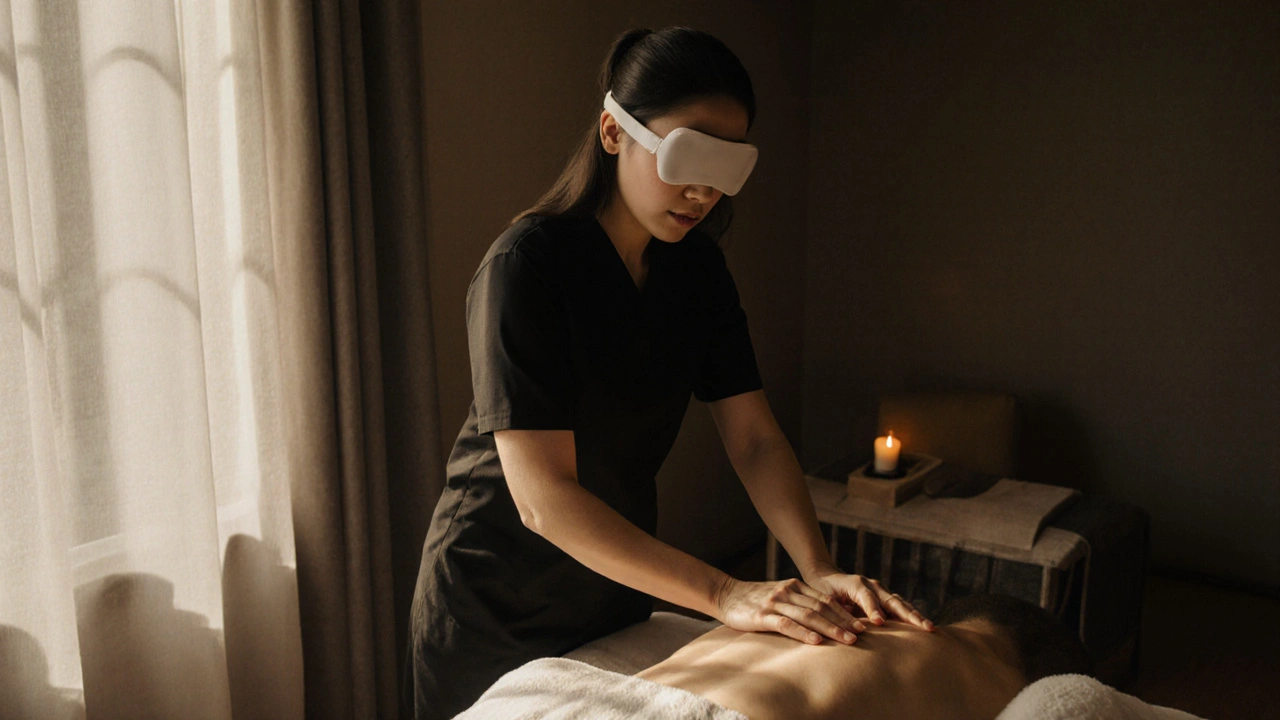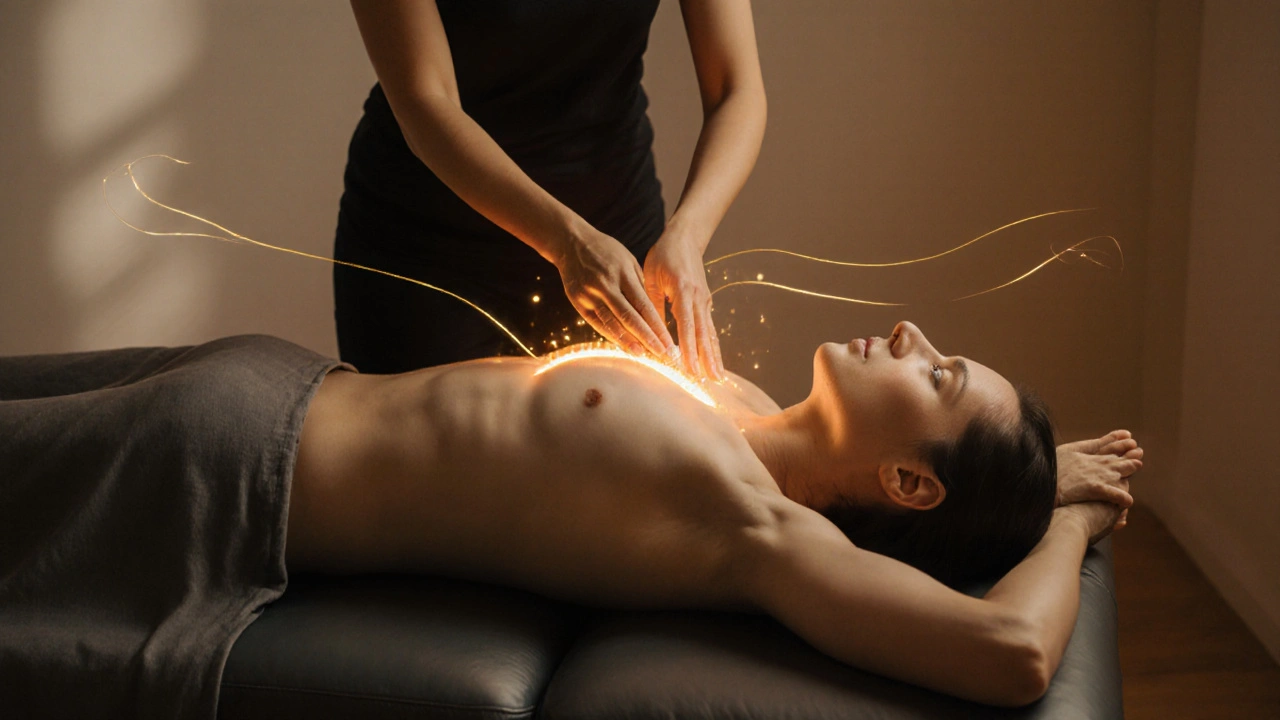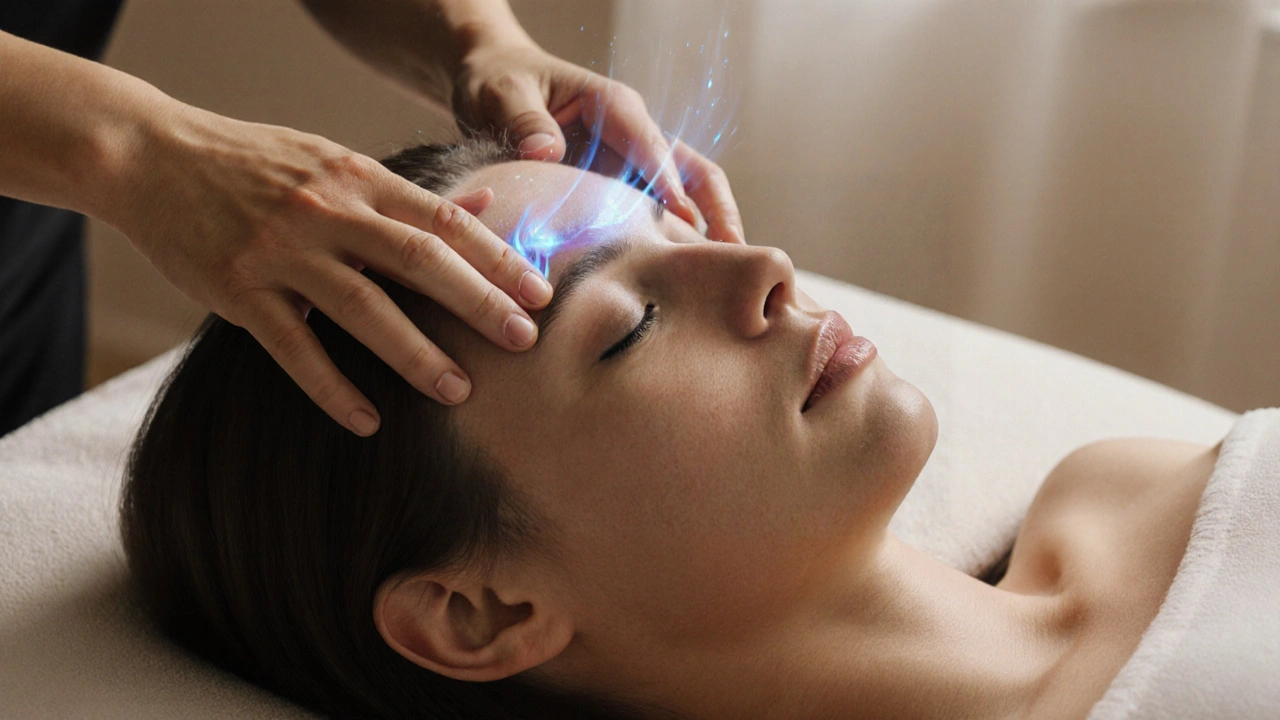Touch Therapy: Practical, Powerfully Simple Ways to Feel Better
Want less pain, better sleep, or a clearer head? Touch therapy can do that. It’s not magic—it's targeted touch, pressure, and movement that helps muscles, nerves, and stress respond differently. Read a short guide, try one method, and notice small, useful changes.
Touch therapy works in three clear ways: it eases tight muscles, calms the nervous system, and improves circulation. That’s why people use it for chronic pain, recovery after workouts, stress, and end-of-life comfort. You don’t need to pick one method forever—mix and match based on how you feel.
Types to try
Acupressure: Press specific points to relieve headaches, stress, or nausea—easy to try at home. Check our post “Unlock Health: The Power of Acupressure for Wellness and Balance” for quick routines.
Amma and Amma Massage: Short, firm strokes that boost circulation and help post-exercise recovery. See “Why Amma Massage is Essential for Your Fitness Journey in 2025.”
Hilot: A Filipino tradition that blends massage with herbal and rhythmic moves—great for deep relaxation. Read “Hilot Massage: Unlocking the Healing Secrets of Filipino Therapeutic Massage.”
Warm stone therapy: Heated stones relax muscles fast and are especially soothing in winter. Try “Warm Stone Massage: Your Secret Weapon Against Winter Blues.”
Feldenkrais and Hellerwork: These focus on movement and body alignment to fix habits that cause pain. See our Feldenkrais and Hellerwork articles for practical exercises and session expectations.
Ortho-Bionomy and Polarity Therapy: Gentle, body-led methods that reduce pain without force. Good if sensitive to intense manipulation—see “Ortho-Bionomy: Transforming Body Healing Naturally” and “Polarity Therapy: The Ultimate Stress-Buster.”
Trigger point and Rolfing: Deeper approaches for specific muscle knots or posture issues. Read “Trigger Point Massage Therapy: Unlocking Real Pain Relief Secrets” and “Rolfing for Scoliosis: Real Relief for Stubborn Back Pain” to learn what to expect.
How to pick the right session
Start with your goal: pain relief, relaxation, or mobility? That directs the method. If pain is sharp or you have health issues, ask your doctor first. For general stress or soreness, try a 30–60 minute session.
Ask the therapist about training, techniques they use, and what a session feels like. Tell them your goals and any medical history. Good therapists adjust pressure and approach quickly—you should feel safer, not worse.
Try one focused session before committing to a series. Keep a short diary: note pain levels, sleep, and mood for a week after. If you want reading suggestions, our site has hands-on guides like “Palliative Massage: A Healing Touch for the Soul” and trend pieces like “Snail Facial Massage: The Surprising Skincare Trend Transforming Beauty in 2025.”
Pick what fits your schedule and budget, and treat it like a simple experiment: try, track, and tweak. Small, consistent steps with touch therapy often yield the best results.

Blind Massage: The Soothing Therapy Trend Taking Over Spas and Homes
Blind massage is a growing relaxation therapy where visually impaired therapists use heightened touch to relieve tension and stress. More effective than traditional massage for many, it’s grounded in deep training and sensory precision.

The Power of Touch: How Polarity Therapy Works and Who It Helps
Polarity therapy uses gentle touch and energy awareness to restore balance in the body. Learn how it works, who it helps, and how it differs from Reiki, massage, and chiropractic care.

Craniosacral Therapy: Harnessing the Healing Power of Touch
Discover how gentle craniosacral therapy works, its benefits, common conditions it helps, what to expect in a session, and how to pick a certified practitioner.

Polarity Therapy Guide: Energy Healing Basics, What to Expect & Safety
Curious about polarity therapy? Learn how it works, what a session feels like, evidence, safety, costs, and self-care moves you can try at home.

Palliative Massage: A Healing Touch for the Soul
This article unpacks what really goes on with palliative massage and why it's more than just a nice rubdown. Find out how this focused touch can make late-stage illness a little softer, both physically and emotionally. There are real stories of relief, honest facts about what works, and practical tips if you're considering this kind of care for yourself or someone you care about. Whether at home or in hospice, palliative massage isn’t just about managing pain—it’s about feeling human again. Get some straightforward advice on how to approach it and what to expect.
Categories
- Health and Wellness (148)
- Alternative Therapies (86)
- Massage Therapy (40)
- Travel and Culture (15)
- Beauty and Skincare (9)
- Holistic Health (8)
- Health and Fitness (5)
- Spirituality (5)
- Other (2)
- Personal Development (2)
Popular Articles

Top Benefits of Choosing Medical Massage Therapy
Jun, 15 2024


